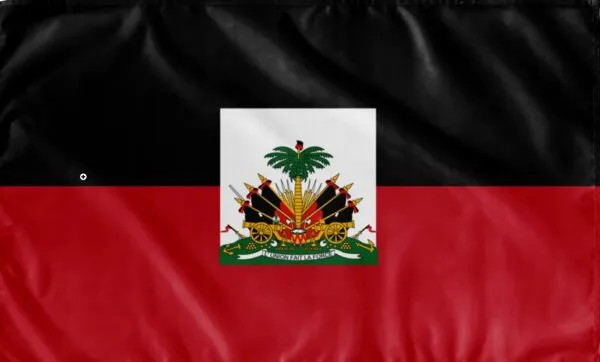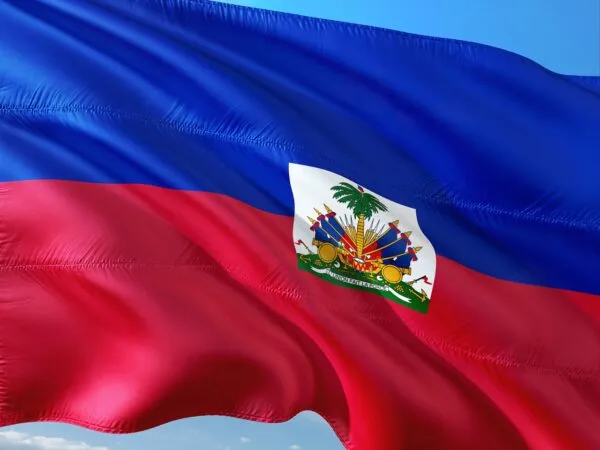When most people think of the Haiti flag, they think of the red and blue with the white star in the middle. But what is the story behind this flag? Why was it chosen as Haiti’s national symbol?
For many Haitians, the flag is a sign of pride. Some flaunt the flag and have it tattooed on their bodies, but maybe unaware of its history or the symbol’s true significance.
The woman who sew the Haitian flag was Catherine Flon. Catherine’s sewing of the flag is an important part of Haitian history, and she is considered one of the country’s national heroes.
It was sewed together in the city of Archaie on May 18, 1803. Haiti’s national song, “Pour le Drapeau” (For the Flag), was composed a century later by Justin Lhérisson with music by Nicolas Geffrey.
According to historians, the former slaves of Haiti tore the white off the flag so that the blue and red might join, signifying the union of the mulatto class of Haiti with the “pure-blooded” blacks.
Black and Red Haitian flag

During the presidency of Francois Duvalier, the flag was modified from blue and red to black and red in 1964.
When Duvalier’s son went into exile in 1986, the red and blue flag was reinstated. The red and black flag was not adopted by Duvalier alone. According to historian Elmide Méléance, at his coronation as Emperor Jacques I in 1805, Dessalines changed to black and crimson.
According to the book Revolutionary Freedoms, Haiti formerly displayed two distinct national flags. Haiti was divided between two kings following Dessalines’ death: Alexandre Sabes Pétion and Henri Christophe. In the south of Haiti, Pétion restored the blue and red flag, but King Henri (er, Henry) maintained the black and red. Following the deaths of Henri and Christophe, Jean-Pierre Boyer governed Haiti under a red-and-blue flag.

The Dominican flag was somewhat inspired by the flag of Haiti. The Trinitarians, who were fervent supporters of the Dominican Independence movement, put a cross in the center to represent Catholicism and a unique coat of arms.
“L’Union Fait la Force” (Unity Makes Strength) is attributed to Pétion, but according to John D. Garrigus’ book Before Haiti: Race and Citizenship in French Saint-Domingue, a former slave from Haiti displayed a red, white, and blue flag with the motto “Notre Union Fera Notre Force” in Paris as early as 1793. (Our Unity Will be Our Strength). “Liberty or Death” was the slogan of the flag when Catherine Flon sewed it.
According to Jana Evans Braziel, Haitians began celebrating Flag Day in the United States as early as 1982, led by the UHA (United Haitians Association) in collaboration with the New York City Council. In the late 1990s, there was a rebirth of Haitian pride and flag flying among Haitians and Haitian-Americans across the United States.
Wyclef Jean, a member of the hip-hop group the Fugees, began the trend. Rodney Noel, a Haitian businessman, initiated a Haitian music festival on the Saturday of Haitian Flag Day.
The Haitian flag has been flown high and proud in the past, but it was usually during protests (such as a march organized by Haitian activists when Haitians were called AIDS carriers in 1990) and seldom on joyous occasions.
During the U.S. Occupation of Haiti from 1915 until 1934, the U.S. flag was flown on Haitian flagpoles. Haitians were not particularly pleased.
Journalist Jean-Léopold Dominique recalls in the documentary The Agronomist that his father would “defiantly place the Haitian flag in front of the home every May 18th, Flag Day.” I asked my father, “What does that imply for you?” He stated, “That indicates you are Haitian.”



